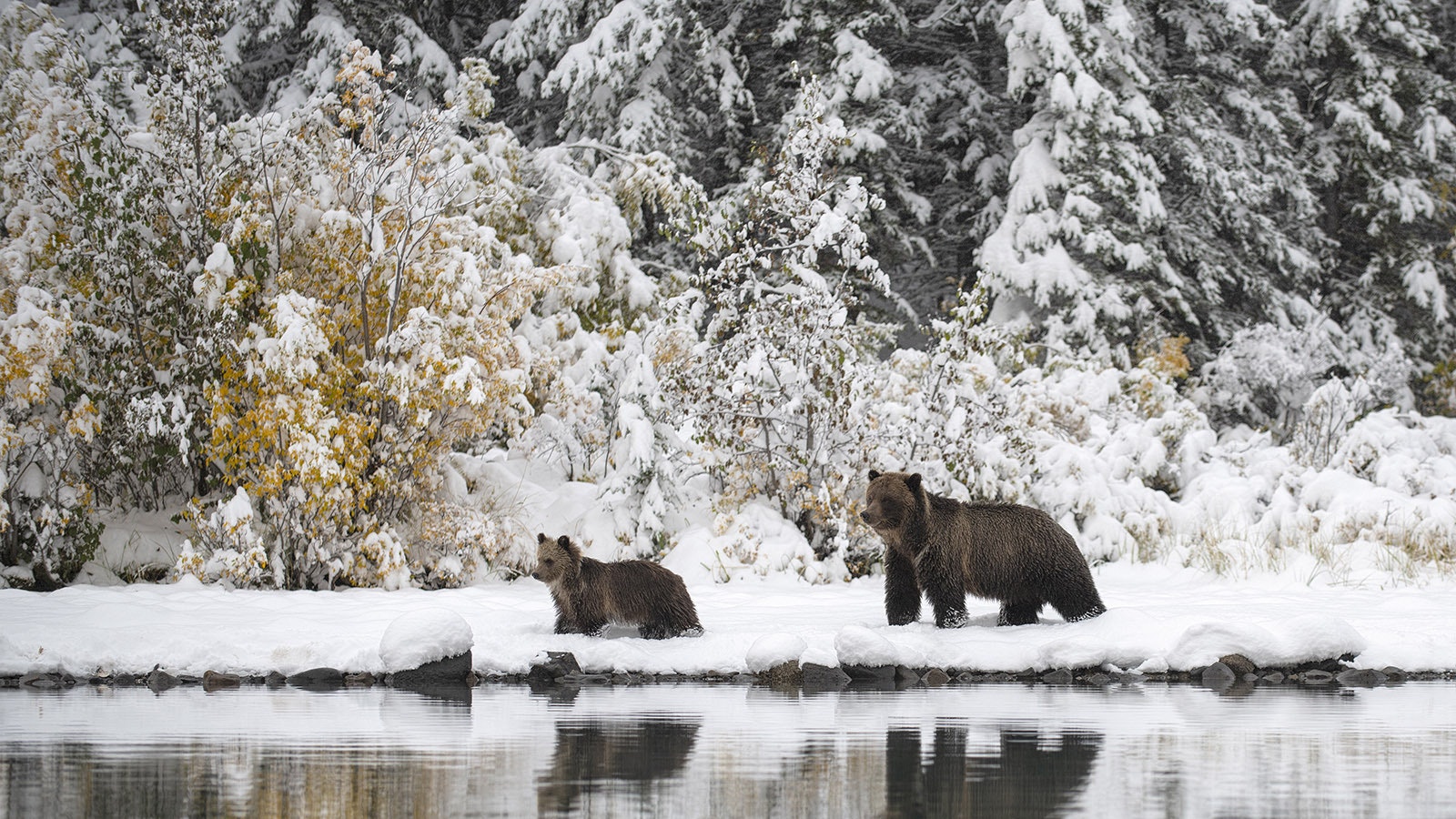If federal plans move forward, some Wyoming grizzlies could end up finding new homes in Washington state.
After years of speculation over returning grizzlies to Washington’s North Cascades, the National Park Service and U.S. Fish and Wildlife Service (USFWS) have taken the first solid step toward reintroducing bears. The agencies last week released a final environmental impact statement (EIS) regarding a potential grizzly reintroduction.
Whether Wyoming grizzlies would be captured and transported to Washington’s mountains remains an open question, Wyoming Game and Fish Department large carnivore specialist Dan Thompson told Cowboy State Daily on Tuesday.
“I don't want to speculate as to where bears would come from this early on, but we — agencies involved with Greater Yellowstone Ecosystem grizzly bears — will hopefully be part of future discussions as to how these things would occur,” Thompson said.
Three Options
With the EIS issued, the next steps will be asking for public comment and fact-finding before making a final ruling within roughly a month whether and how to proceed, according to the federal agencies.
There are three options.
First, the reintroduction plan might simply be scrapped. The second option would be to classified the reintroduced bears as a “threatened population,” with full protection.
Or as a third option, they could be reintroduced as a “nonessential experimental population,” which would possibly allow the killing of bears that caused conflict with humans.
If the bears are reintroduced, the plan is to relocate three to seven grizzlies every year for five to 10 years until there were 25 grizzlies in the Cascades recovery zone. It’s hoped that would result in a permanent population of roughly 200 grizzlies within 60-100 years, according to the EIS.
‘Island Populations’ Of Grizzlies A Bad Idea?
A Wyoming bear conservationist said the Washington reintroduction, while well-intended, might not do much for overall grizzly recovery in the Lower 48.
“One would have to say that I am ambivalent on the North Cascades Ecosystem (NCE) proposal,” retired federal ecologist Chuck Neal of Cody told Cowboy State Daily.
Neal has long argued that the Greater Yellowstone grizzlies are an isolated “island population.” And he thinks that reintroducing bears to the Cascades might produce similar results.
“It is not that I am against bears in the NCE, but there are certain issues that I would like to see resolved first,” he said. “There is no viable grizzly population in the Canadian portion of the NCE at present. So basically any reestablished bear population in the NCE would be an island population.”
And “island populations are not viable populations,” Neal added.
The Canadian government would have to implement better protections for grizzlies to the north, as well as better travel corridors for bears, he said.
“I would like to see protected connectivity habitat established both north and east of the NCE, with overpasses and underpasses built along the transportation corridors in southern British Columbia at a minimum before any translocation of bears (to Washington) takes place,” Neal said.
It’s Not Up To Wyoming
Grizzlies in Wyoming, Montana and Idaho remain under federal jurisdiction and protection.
That means, as things stand now, Gov. Mark Gordon, along with his counterparts in Montana and Idaho, could not refuse to send grizzlies to Washington, as they did when they denied giving Colorado wolves for its reintroduction program.
There was a push last year by Gordon and other Western politicians to have grizzlies delisted and full management handed over to the states, but for now at least, those efforts have fizzled.
Central Idaho Remains The Key
Neal said time and money would be better spent reintroducing grizzlies to the remote wilderness areas of central Idaho.
That could establish a link between the Greater Yellowstone grizzly population and Montana’s Northern Continental Divide grizzlies, radiating out from Glacier National Park.
The Glacier Park grizzlies are already expanding territory on their own, pushing east out into the prairies of Montana. They’ve gone as far as the Missouri Breaks.
Efforts to possibly reintroduce grizzlies to the Bitterroot Mountains in central Idaho and parts of Montana are also underway. The USFWS recently closed a public comment period and is working on an EIS regarding possibly reintroducing grizzlies to the Bitterroot area.
If that goes through, it would create a vast, interconnected grizzly population all they way into Canada, Neal said.
“I fear that if the feds get too involved with the NCE reintroduction (in Washington), they will take their eyes off of the real prize, a viable reestablished connected grizzly population across the U.S. northern Rockies, which in turn is already connected to Alberta/British Columbia,” he said.
Mark Heinz can be reached at mark@cowboystatedaily.com.





